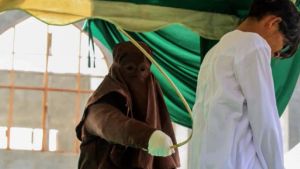JAKARTA - On June 18, 1429, French troops defeated the British troops led by John Fastolf in the Battle of Patay in Patay, France. At that time, the French troops were led by a woman named Jeanne d'Arc.
It was one of the wars of the Hundred Years' War. British troops took a lot of losses by losing many of their soldiers. About 2,500 British soldiers died. Meanwhile France lost a hundred soldiers.
Before leading the army, Jeanne had never ventured far from home. She only takes care of animals and sews. Citing Biography, in 1415, King Henry V of England invaded France.
After inflicting a crushing defeat on the French troops, the British had the support of the Burgundians in France. The Treaty of Troyes of 1420 gave the throne of France to King Henry V as regent for the mad King Charles VI.
That way Henry would take the throne if Charles died. But in 1422, Henry and Charles died in just a few months. The deaths of both left Henry's infant son as king of both kingdoms.

This was seen as an opportunity for French supporters. Charles VI's son, Charles VII, was considered an opportunity to return the crown to the French king. Around this time a belief grew in Jeanne's heart.
He believed God chose him to lead France to victory in a long-term war with Britain. He has a vision that encourages him to live a holy life.
Over time, the vision became clearer and prompted him to meet Charles VII who had the title of Dauphin (heir to the throne). Jeanne asked for her permission to expel the British and would make Charles the rightful king.
Meet the DauphinIn May 1428, Jeanne received a 'message' instructing her to go to Vaucouleurs and contact Robert de Baudricourt, garrison commander and supporter of Charles VII. At first, Baudricourt refused Jeanne's request.
But then after seeing he had the approval of the villagers, Badricourt relented and gave Jeanne a horse and escort. Jeanne cut her hair and put on men's clothes for an 11-day journey across enemy territory to Chinon.
When Jeanne arrived, Charles VII wasn't sure what to do with the peasant girl who asked for an audience and claimed she could save the French. However, Jeanne earned her trust when she managed to disguise herself in the crowd of Charles' courtiers.
The two had a private conversation. It is said that Jeanne revealed details of Charles' prayer to God to save France. Still tentative, Charles asked a prominent theologian to examine it.
The priests reported that they found nothing inappropriate about Jeanne. They find only piety, holiness and humility.
Jeanne d'Arc at the battle of Orléans
Jeanne d'Arc at that time was 17 years old. He was given armor and a horse. He was also allowed to accompany soldiers to Orléans, the place of the British siege. In a series of battles between 4 May and 7 May 1429, French troops took control of the English forts.
Jeanne was injured but returned to the front line to push for the final attack. Until finally on June 18, 1429, French troops led by Jeanne defeated England. Yet Charles still didn't look at Jeanne.
After the victory at Orléans, Jeanne continued to encourage Charles to rush to Reims to be crowned king. But Charles and his advisers decided to be more careful.
Charles and his procession finally entered Reims and he was crowned King Charles VII on July 18, 1429. Joan was by his side, occupying a visible place in the ceremony.
In the spring of 1430, King Charles VII ordered Jeanne to Compiègne to confront the Burgundian invasion. During the battle, Jeanne was thrown from her horse and left outside the city gates.
The Burgundians then detained Jeanne for several months, negotiating with the British, who saw her as a valuable propaganda gift. Finally, the Burgundians exchanged Jeanne for 10,000 francs.
Charles VII was unsure of what to do and distanced himself from Jeanne's business. Jeanne was then handed over to church officials who insisted she should be tried for heresy.
Jeanne was charged with 70 counts, including witchcraft, heresy and dressing like a man. On May 29, 1431, the court declared Jeanne d'Arc guilty of heresy. On May 30, he was taken to the market in Rouen and burned at the stake.
The execution was carried out in the presence of about ten thousand people. At that time Jeanne was 19 years old. One of the legends surrounding the event tells how his heart survived the fire unaffected. His ashes were collected and scattered across the Seine.
After Jeanne's death, the Hundred Years' War continued for another 22 years. King Charles VII retained his crown and ordered an investigation in 1456 that found Jeanne d'Arc innocent of all charges. Jeanne was canonized as a saint on May 16, 1920 and is named the patron saint of France.
*Read other information about WORLD HISTORY or read other interesting articles from Putri Ainur Islam.
Other BERNASThe English, Chinese, Japanese, Arabic, and French versions are automatically generated by the AI. So there may still be inaccuracies in translating, please always see Indonesian as our main language. (system supported by DigitalSiber.id)












